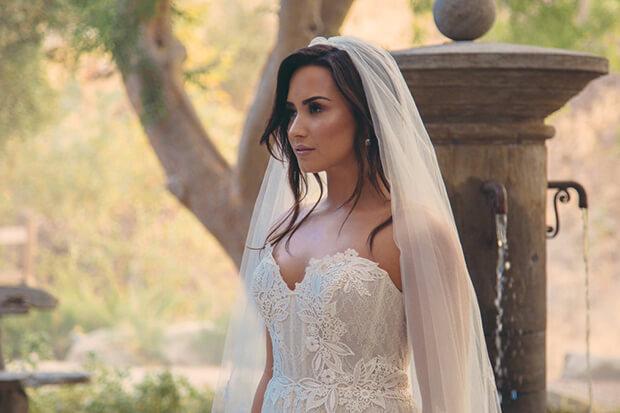Wedding bells are chiming as Jesse Williams proposes to Demi Lovato in her new music video for “Tell Me You Love Me.” Slowly, their story begins to unravel on screen as the viewer learns that the video does not match the words to the love song, but rather tells a completely different story about unhealthy relationships. Lovato is one of many current artists who is no longer just producing music, but huge video productions to paint the full picture.
One can date music videos back to Aug. 1, 1981 when MTV, previously a 24-hour music television channel, released the first ever music video to The Buggles’ “Video Killed the Radio Star.” Since then, music videos have become a common addition that many artists choose to use when releasing new songs, and there is wide variation among them.
There are many iconic, quirky videos that will always be remembered, like the members of Ok Go! sliding around on treadmills, Britney Spears strutting down a school hallway, or Beyoncé in a leotard and heels with her single ladies. Music videos were not necessarily movies, but clips that went together to create a song’s visuals.
While there are several music videos that do tell a story, it is becoming more of a trend to make bigger video productions. These videos are not only telling the full story, but also being used to recreate what the artist wants to send out.
Lovato’s production for “Tell Me You Love Me” is more like its own mini movie being almost seven minutes long. The first two and a half minutes show the relationship between her and Williams. Viewers see the unhappiness and hear the arguments that take place in their relationship before the song begins. As viewers continue watching, they see Williams and Lovato not in a love-filled relationship, but a poisonous one. While the lyrics alone suggest love with Lovato singing, “I don’t know who I am without you,” Lovato uses the video to talk about something less discussed: toxic relationships.
Extravagant video productions are becoming much more common today. Artists are no longer calling them “music videos.” Justin Timberlake and the band Imagine Dragons, along with Lovato and many other artists, are using words like “film” and “directed by” in their opening credits, much like an actual movie production does. Music videos are also becoming much longer, furthering this movie-like feeling.
It is nothing new to have a lengthy video telling a story; Michael Jackson’s “Thriller” spends almost 14 minutes playing out a mini-movie. But today, the long stories that artists tell through video are often meant to also draw attention to larger issues or add more information that the lyrics don’t say.
P!nk’s “What About Us” spends its opening 40 seconds showing people surrounded by police searchlights, alluding to the political system that makes some question, “What about us?” Some artists are releasing full “visual” albums, like Beyoncé’s “Lemonade.” While Thomas Rhett’s “Marry Me” song is about lost love, the music video shows the full, happier story. Joyner Lucas’s video for “I’m Not Racist” shows two men of opposite races stereotype each other to draw attention to the disconnect among different cultures. Artists are now using videos to complete the messages they want to send out.
Music videos also serve as a platform for artists to reinvent their own image and what they stand for. Lovato, who is an icon for self-love and both physical and mental health, allows viewers to see her more vulnerable through her depiction of herself in her music video. With her video, she makes herself relatable and credible to stand for toxic relationships rather than showing her usually empowering self. She uses her video to completely paint herself in a new light.
Big music industries and culture are changing, giving attention to things that they used to consider taboo. Songs are beginning to stand for important, relevant issues and music videos have quickly become a force to strengthen the songs. Video didn’t kill the radio star; video came together with radio to help music stand stronger than it does when it stands alone.





![[Both photos courtesy of sonoma.edu]
Ming-Ting Mike Lee stepped in as the new SSU president following Sakakis resignation in July 2022](https://sonomastatestar.com/wp-content/uploads/2024/04/CC4520AB-22A7-41B2-9F6F-2A2D5F76A28C-1200x1200.jpeg)


























